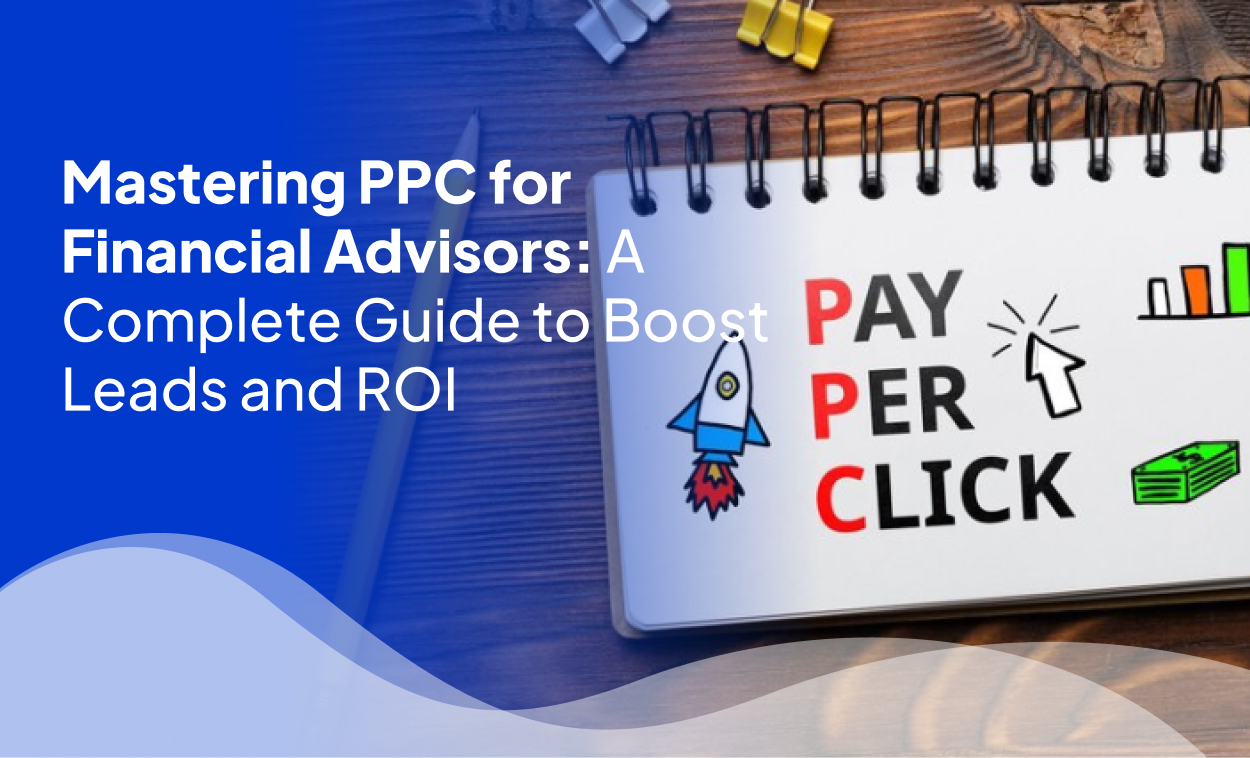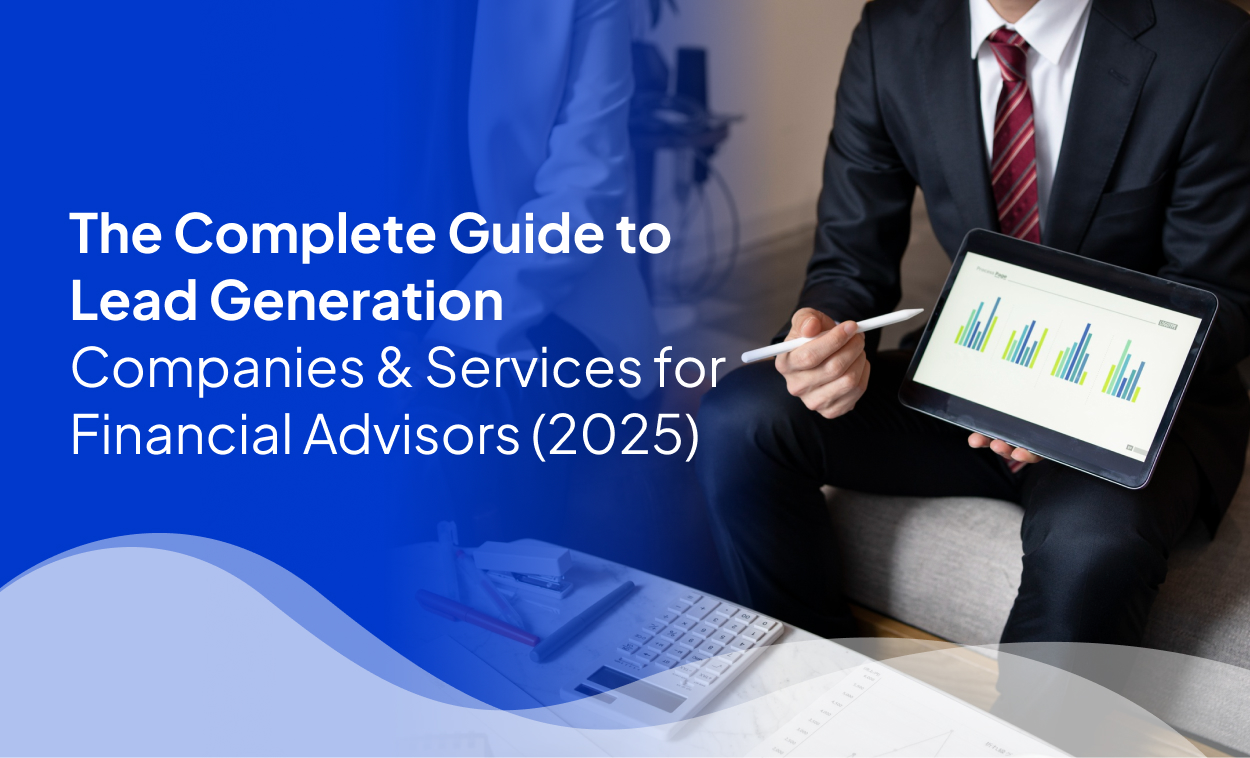
- Written & Reviewed by Jeremy
- Published
- Last Updated Nov 18, 2025
As a financial advisor, every dollar counts whether managing investments or marketing budgets. The key challenge is achieving measurable, positive returns from online advertising amidst competition and strict regulations.
With Pay-Per-Click (PPC) campaigns, you can generate high-intent leads, boost brand visibility, and predict your returns. However, the financial industry requires careful strategy to avoid costly missteps and ensure compliance.
This comprehensive guide covers everything financial advisors need: choosing platforms, crafting ads, targeting, landing pages, bidding strategies, remarketing, compliance, and optimization with practical insights to maximize ROI.
Why PPC Matters for Financial Advisors?
ppc for financial advisors isn’t just optional, it’s essential. PPC-generated traffic converts about 50% better than organic search, with an average $2 return for every $1 spent on Google Ads. This makes PPC a powerful tool for acquiring qualified leads in a highly competitive market.
Financial services marketing faces unique challenges:
- Regulatory Compliance: The SEC, FINRA, and Google have strict rules governing financial ads.Violations can result in suspensions or fines.
- High Cost-Per-Click (CPC): Keywords such as “retirement planning” are expensive. Ineffective targeting leads to wasted budgets.
- Long Client Journey: Financial decisions take time, so PPC campaigns must nurture leads through research and trust-building phases. PPC’s measurable nature allows advisors to control budgets precisely, track every click and conversion, and adjust campaigns dynamically for better ROI.
Step 1: Choose the Right PPC Platforms
Selecting the right platform is crucial to reaching your ideal audience with the best ROI:
- Google Ads: The strongest platform for capturing users actively searching for financial advice. Use Search Ads for intent-driven queries like “best financial advisors near me,” Display Ads to build brand awareness, and Local Service Ads to increase trust via verified listings.
- Facebook & Instagram: Instagram and facebook ads for financial advisors ideal for retargeting visitors who didn’t convert initially. Use Lead Ads for easier sign-ups, Video Ads for educational storytelling, and Carousel Ads to showcase multiple services or client testimonials.
- YouTube: Video ads engage users by explaining complex financial concepts, establishing your expertise, and fostering trust. Pre-roll skippable and non-skippable ads can target users interested in specific financial topics.
- LinkedIn: Best for reaching high-net-worth professionals, executives, and business owners. Sponsored Content, InMail Ads, and Text Ads allow precise targeting based on industry, job title, and company size.
- Microsoft Ads (Bing): A less-competitive option with lower CPC, effective for reaching older demographics who prefer Bing. Use Search and Display Ads tailored to this audience.
Combining these platforms lets advisors capture interest at different touchpoints in the client journey.
Step 2: Leverage First-Party Data for Smarter Targeting
With third-party cookies phased out, first-party data is gold:
- CRM Data Integration: Upload your existing client data to Google and social ad platforms to create lookalike audiences that resemble your best clients.
- Google Customer Match: Re-engage previous visitors, newsletter subscribers, or past leads with custom-tailored ads.
- Email Retargeting: Send exclusive offers and personalized messages to previous leads who didn’t convert.
This precise targeting improves lead quality and decreases wasted spend.
Step 3: Implement a Precision Keyword Strategy
Choosing the right keywords is crucial to converting clicks into leads:
- Focus on Long-Tail Keywords: These are longer, specific phrases like “affordable retirement planning for healthcare workers” with lower CPC and higher intent than generic terms.
- Segment by Buyer Journey: Use educational keywords (e.g., “how to plan retirement savings”) for awareness-stage prospects, and transactional keywords (e.g., “book a retirement consultation”) to capture ready-to-act leads.
- Use Negative Keywords: Exclude irrelevant terms like “personal loans” if you don’t offer them, minimizing wasted clicks.
Regular keyword optimization helps maintain campaign efficiency.
Step 4: Optimize Landing Pages for Maximum Conversions
High-quality traffic needs landing pages designed to convert:
- Simplify Forms: Ask only for essential info such as name, email, and phone to reduce friction.
- Add Social Proof: Include client testimonials, industry certifications (like CFP or CFA), ratings, and trust badges to build credibility.
- Improve Page Speed and Mobile Responsiveness: Fast-loading, readable pages keep visitors engaged and reduce bounce rates.
- A/B Test CTAs: Experiment with different calls to action such as “Book Your Free Financial Review” vs. “Start Securing Your Retirement Today” to identify the best performers.
A well-optimized landing page acts as the final step to turn clicks into qualified leads.
Step 5: Craft Ad Copy That Builds Trust and Resonates Emotionally
Financial decisions are personal your ad copy must inspire confidence and empathy:
- Use Trust Signals: Mention certifications, years of experience, and client success stories.
- Address Specific Pain Points: Ads like “Retirement plans tailored for healthcare professionals” are far more effective than generic messages.
- Incorporate Urgency and Offers: Test limited-time offers or exclusive consultations to create FOMO (fear of missing out).
- Trigger Emotional Responses: Talk about protecting family security, gaining retirement freedom, or easing financial anxiety.
Compelling copy improves CTR and downstream conversions.
Step 6: Utilize Smart Bidding Strategies for High ROI
Managing high CPC requires bidding tactics that maximize results:
- Maximize Conversions: Allow Google Ads to automatically adjust bids to generate the most leads within budget.
- Target Return on Ad Spend (ROAS): Ideal for wealth management or high-value planning services where client lifetime value is significant.
- Manual CPC: Provides granular control for competitive keywords, letting you allocate spend strategically.
Combining bidding strategies based on campaign goals improves efficiency.
Step 7: Local PPC for Advisors with Physical Offices
If your firm has brick-and-mortar locations, local PPC for financial advisors can drive walk-in traffic:
- Geo-target Ads: Restrict ads to cities, postal codes, or radius around your office to reach nearby prospects.
- Google My Business Integration: Sync local ads with GMB profiles to show accurate contact info, reviews, and verified badges.
- Use Location Extensions: Add click-to-call buttons, map directions, and office address right within your ads.
Localized targeting reaches prospects ready to engage face-to-face.
Step 8: Remarketing Campaigns to Re-Engage Prospects
Many clients need multiple touches before choosing a financial advisor. Remarketing keeps your brand top of mind:
- Google Display Retargeting: Show banner ads to visitors after they leave your site, reminding them of your services.
- YouTube Remarketing: Serve video ads to users who watched your content but didn’t convert.
- Dynamic Remarketing Ads: Personalize ads by showing specific services or plans users previously viewed on your website.
Remarketing accelerates conversions by reinforcing trust and familiarity.
Step 9: Use Ad Extensions to Enhance Visibility and CTR
Ad extensions make your ads more useful and clickable:
- Call Extensions: Let mobile users call your office directly from the ad.
- Site Link Extensions: Link to important pages like “Services,” “Testimonials,” or “Free Consultation.”
- Review Extensions: Highlight client ratings and awards.
- Location Extensions: Provide address and map details to promote local visits.
Extensions improve ad prominence and lower cost-per-click by increasing click-through rates.
Step 10: Conduct Regular PPC Audits and Optimization
In financial marketing, compliance is paramount:
- Adhere to SEC, FINRA, and Google Advertising Policies: Avoid misleading claims, ensure transparent disclosures, and protect client confidentiality.
- Disclose Fees, Risks, and Terms Clearly: Place disclaimers on ads and landing pages.
- Train Your Marketing Team: Keep everyone updated on evolving regulations.
- Consult Legal Experts: Regularly review campaigns for compliance.
Extensions improve ad prominence and lower cost-per-click by increasing click-through rates.
Disclaimer:
This guide is offered solely for informational and educational purposes and does not constitute personalized financial, legal, business, or marketing advice. The strategies, examples, and data shared herein are general in nature and may not be applicable to every financial advisory practice or individual situation. Results from implementing these PPC tactics can vary and are not guaranteed. Financial advisors should carefully evaluate these recommendations in the context of their unique goals, compliance requirements, and market conditions. It is recommended to consult qualified professionals before making decisions related to advertising, compliance, or client engagement.






